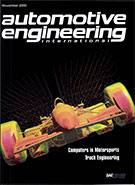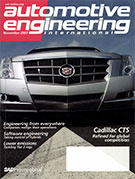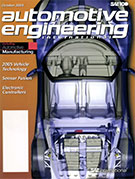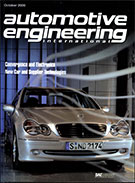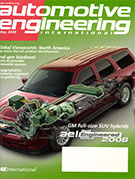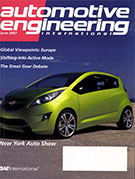Magazine

SAE Off-Highway Engineering 2013-08-08
2013-08-08
Simulating off-highway hybrids With customers squeezed by fuel costs, off-highway OEMs are showing some interest in developing hybrid equipment. CAE simulation tools are needed because of lack of experience with such devices. Their functional complexity requires control system simulation throughout their lives. A hose is a hose is a hose Researchers develop a method for the precise mounting of a hydraulic hose model. Integrity sensing for safety Researchers from Purdue developed a capacitance-based method for monitoring the integrity of tires, hoses, and other polymeric products during manufacturing and throughout the useful product life.


